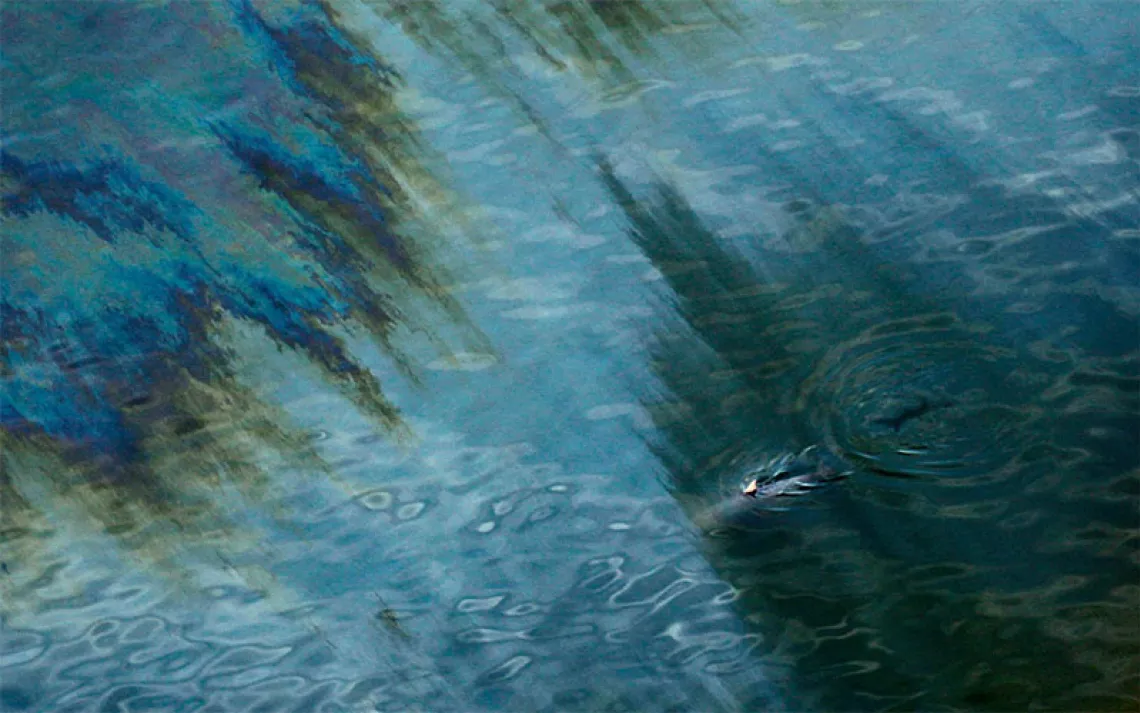The Fight to Protect Bears Ears
A coalition of five Native American tribes is pushing President Barack Obama to create a new national monument in Utah as opposition mounts

Bears Ears | Photograph courtesy of David Parsons/iStock
Utah’s southeast corner is a land of extremes—high-desert canyon country with names like Grand Gulch, Dark Canyon, and Valley of the Gods. Many local Native American tribes consider a distinctive pair of buttes in the heart of the region, called the Bears Ears, to be sacred ground. The tribes are calling on President Obama to designate a huge new national monument there before he leaves office. This being Utah, where federal oversight of public lands has always been a contentious issue, the idea is causing an uproar.
The history of habitation in the Bears Ears region goes back over 3,000 years, from early hunter-gatherers and Basket Maker cultures to the later arrivals of Navajo, Ute, and Mormon settlers. Today it’s part of San Juan County, the largest and poorest in Utah. Slightly bigger than New Jersey, San Juan has about 15,000 residents, roughly half of whom are Native American, and an unemployment rate that’s twice the state average.
Early inhabitants left behind ruins, rock art, and artifacts that are often amazingly well preserved by the dry climate. Archaeologists with the Bureau of Land Management, which manages over 40 percent of the county, know of 32,000 recorded sites—likely a fraction of the true number. Some estimates put the count at 250,000 per square mile, more than in any other county in the United States.
The region also has a long history of looting and vandalism of archaeological sites. The BLM has recorded 26 incidents of serious damage to cultural resources in San Juan Country since 2011, with seven in the first half of 2016 alone. People have destroyed 19th-century Navajo hogans for firewood and used rock saws to remove entire petroglyph panels. Vandals dig up sites in search of pottery and other artifacts to sell or collect, sometimes disturbing human remains in the process. The BLM does its best to patrol and educate the public, offering as much as a $2,500 reward for information leading to convictions, but at the moment there are only two BLM law enforcement officers to cover 1.8 million acres.
Tired of waiting for local and state legislators to act, a coalition of five tribes that share ancestral ties to the region (Navajo, Hopi, Ute Mountain Ute, Uintah and Ouray Ute, and Zuni) released a proposal in October 2015 for Bears Ears National Monument. At 3,000 square miles, it would be slightly smaller than Yellowstone National Park and connect Canyonlands National Park, Glen Canyon National Recreation Area, and the Navajo Nation.
This is the first time Native American tribes have asked a U.S. president to protect ancestral land using his power under the 1906 Antiquities Act—which, ironically, was passed 110 years ago in large part to protect Native American sites in the west. Representatives from the five tribes and three federal agencies (BLM, Park Service, and Forest Service) would manage the monument. Traditional practices like collecting firewood and medicinal plants could continue, as well as grazing and hunting, according to state and tribal law.
“We’re aware that once you create a monument it brings more people,” says Mark Maryboy, a Navajo and board member of Utah Dine Bikeyah, the tribal group advocating for the monument. “But at least it’ll be managed and regulated, instead of just leaving everything out there with no protection.”
Creating a new national monument would also protect sensitive wildlife habitat from oil and gas development and illegal off-road vehicle abuse, says Dan Chu of the Sierra Club’s Our Wild America campaign.
Statewide opinion polls have been mixed, but in May, Utah’s Republican legislature passed a resolution opposing the creation of any new national monuments in the state without the approval of the governor and state lawmakers. Senator Orrin Hatch warned Secretary of the Interior Sally Jewell that a presidential declaration could lead to an armed standoff like the one at the Malheur National Wildlife Refuge in Oregon. Meanwhile, President Obama has already designated five national monuments this year, including three in Southern California that cover over 2,800 square miles. In July, Secretary Jewell toured the area and attended a public meeting in Bluff that drew a large and vocal crowd, with people speaking for and against the monument.
“It seems like the only option we have right now is to work with the Obama administration and create this national monument,” Maryboy says. “Otherwise I think the entire area will be ruined.”
 The Magazine of The Sierra Club
The Magazine of The Sierra Club



